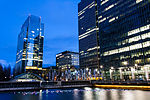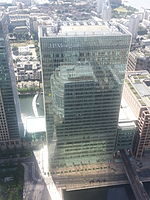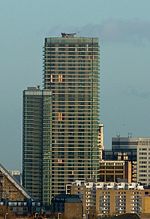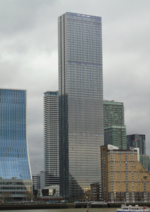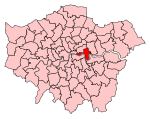Wardian London

Wardian London is a luxury residential complex located in the centre of Canary Wharf’s financial district from Eco World-Ballymore and designed by architect firm Glenn Howells. The scheme consists of two skyscrapers, approved by Tower Hamlets council in November 2014 and completed in August 2020, is one of the tallest residential developments in London and the United Kingdom.With over 70% of the flats priced at over £1.5 million, and penthouses priced at over £3 million, Wardian London is thought to be the most expensive residential development in East London. Occupants will also be members of The Wardian Club and have exclusive access to amenities including 24 hours concierge, spa & gym, 25-metre heated swimming pool, cinema, business centre, restaurants, shops and observation deck.
Excerpt from the Wikipedia article Wardian London (License: CC BY-SA 3.0, Authors, Images).Wardian London
Marsh Wall, London Isle of Dogs
Geographical coordinates (GPS) Address Nearby Places Show on map
Geographical coordinates (GPS)
| Latitude | Longitude |
|---|---|
| N 51.501234 ° | E -0.022895 ° |
Address
Marsh Wall
Marsh Wall
E14 9JF London, Isle of Dogs
England, United Kingdom
Open on Google Maps




